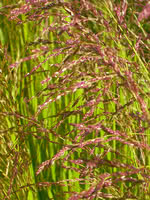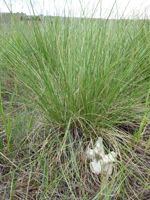Mon-Fri 9am - 5pm Mountain time
Tall Manna Grass vs Rough Fescue
Glyceria grandis
Festuca campestris
CUSTOM GROW
CUSTOM GROW
Manna Grass and other waterside plants are an excellent way to prevent erosion and provide habitat and forage for animals. The difference is that Manna Grass looks better doing it! With distinctive purple grains at the top of its stalks, Manna Grass adds a splash of color to the waterside that most other aquatics can't offer.
Manna Grass is good for returning disturbed sites to nature and provides nourishment to many animals, except for cattle who find it toxic.
Rough Fescue is a native perennial bunchgrass valued for its tall, dense clumps and long-lived growth. Adapted to cold climates and nutrient-poor soils, it is a defining species of northern prairie and montane grasslands. In western Canada and the northern Rocky Mountains, Rough Fescue is considered a keystone species because it shapes plant communities, stabilizes soils, and supports ecosystem resilience.
It is a cool-season grass, growing most actively in spring and fall and slowing during the heat of summer. Rough Fescue is highly regarded as forage for wildlife and livestock, with elk, deer, and other grazing animals favoring it. Taller than many other fescue species, it is well-suited to prairie restoration, erosion control, and naturalization projects where it supports both biodiversity and long-term ecosystem health.
Tall Manna Grass Quick Facts
Rough Fescue Quick Facts
Toxicity: toxic to cattle

